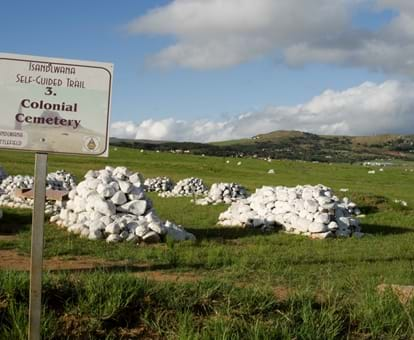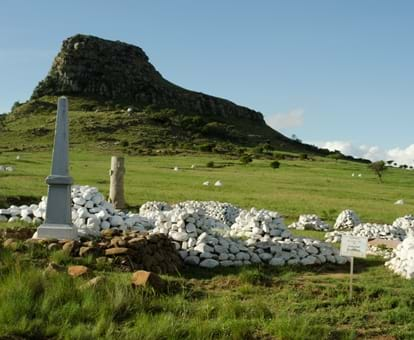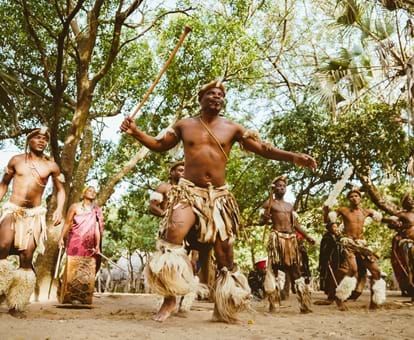By creating an account, I agree to the
Terms of service and Privacy policy
Choose your country and language:
Africa
Americas
Asia Pacific
Europe
TThe Anglo-Zulu War was one of the great 19th century dramas that played out in what is today northern KwaZulu-Natal province, when British forces invaded Zululand to subjugate the kingdom, ruled by King Cetshwayo.
While relatively short-lived, the Anglo-Zulu War of 1879 has been the subject of numerous historical studies, works of fiction and international films. Today, the numerous Anglo-Zulu War battlefields in northern KwaZulu-Natal are major tourist attractions.
As with all conflicts, the causes of the Anglo-Zulu War of 1879 are complex, but the war should be seen in the light of the British imperial determination to create a federation of colonial states in southern Africa.
The spark for war was provided by border incidents between British and Boer settlers and the Zulus, especially along a disputed strip of land on the north-western Zululand border running from Rorke's Drift to the Pongola River.
The tendency of Zulu men and women who had transgressed the laws of the kingdom to flee to European Christian mission stations across the border, where they were no longer subject to Zulu law, was also a source of tension, especially when transgressors who returned to Zululand were subjected to draconian punishments, leading to an outcry from European settlers.
An ultimatum was delivered to Cetshwayo on 11 December 1878, which would expire on 11 January the following year, requiring among other impossible demands that he disband the age-based regiments of Zulu warriors on which his sovereignty and power as the king depended.
Cetshwayo could not comply, and Lord Chelmsford invaded Zululand in January 1879 without waiting for the British Crown’s authority to do so. He had three columns, their objective the royal capital at Ulundi, which entered Zululand unopposed at Lower Tugela, Utrecht and Rorke's Drift.
PPart of Chelmsford's column advancing from Rorke's Drift encamped at Isandlwana under Lieutenant Colonel Henry Pulleine, while Chelmsford moved on to join a reconnoitring party. Largely unprepared, the camp was surprised by an impi of 20 000 Zulus and wiped out, in what was to be the defenders’ most decisive victory.
Most historians agree that the Battle of Isandhlwana was the most comprehensive defeat of a British army by a native people without firearms in the entire history of the British Empire.
A 4 000-strong Zulu reserve group moved on from Isandhlwana to Rorke's Drift but was repulsed after 10 hours of fierce battle. While the Zulu besieged Eshowe and won further battles at Hlobane and Intombi Spruit, they were eventually defeated at the Battle of Ulundi on 4 July 1879, which brought an end to the war.
Zululand was annexed in 1887 and a decade later incorporated into the British colony of Natal, which became a province of the Union of South Africa in 1910. The province was officially renamed KwaZulu-Natal after the end of apartheid in 1994.
The Anglo-Zulu War in South Africa still resonates strongly in the country’s contested history, and the battlefields are a popular tourist destination.
TTravel tips & Planning info
How to get here
The Anglo-Zulu War battlefields are spread across northern KwaZulu-Natal from Rorke’s Drift to Ulundi. The battlefields are all easily accessible by car.
Best time to visit
All year round, but winter is better, as it is cool and dry.
Around the area
Visit a traditional Zulu homestead to learn more about traditional culture.
Get around
There are Anglo-Zulu War battlefields brochures available at tourism information offices in KwaZulu-Natal. You will have to drive from one battlefield to the next.
Length of stay
Give yourself at least three days, more if possible.
What to pack
Comfortable walking shoes or boots and adequate sun protection, even in winter.
Where to stay
There are a number of quality lodges and guesthouses in the battlefield’s region, as well as plenty of small towns of historical interest.
What to eat
While you are in the region, why not try some Zulu cuisine? Many lodges and restaurants in the area serve local fare.
Best buys
Handmade Zulu arts and crafts sold at the roadside.
Related Links
Planning a trip to South Africa? Meet Your South Africa guides, the people that know the country best! Read the Meet Your South Africa magazine here
__________________________________________________________________________________
For inspiration and insider tips, follow us on Instagram, Facebook, or Twitter. Tag #MeetSouthAfrica to share your pics with us, or subscribe to our newsletter for latest information, great holiday offers, prizes and consumer events across South Africa.

|Terms and conditions|Disclaimer|Privacy policy|Social Media Terms and Conditions|Competition Terms and Conditions



